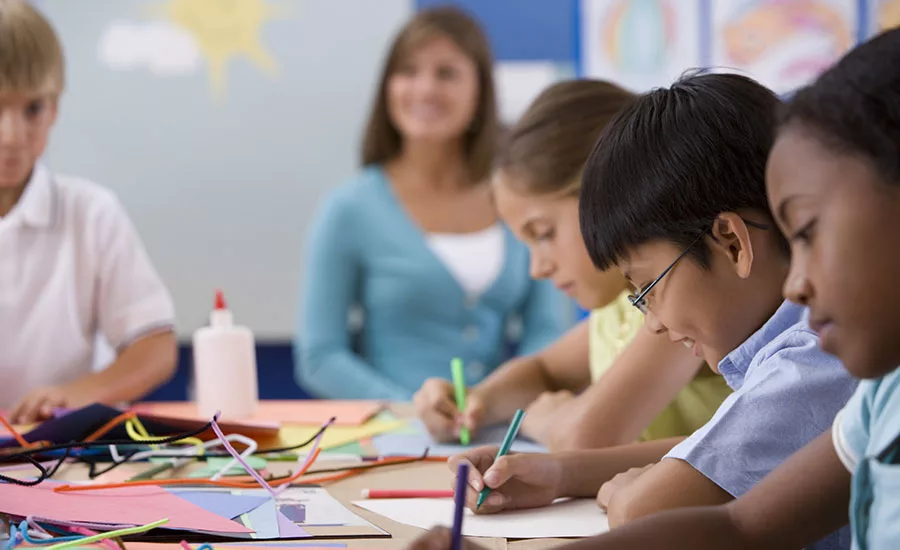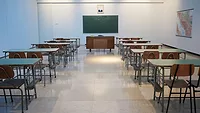Technology’s role in safeguarding K-12 schools

Now more than ever, K-12 leaders are faced with the need to implement security solutions and strategies that adequately protect students, staff and visitors from potential threats. Growing incidents, such as school shootings, unauthorized visitors and disease transmission, can put occupants in harm’s way, making security a persistent need. Schools now have the opportunity to use and expand on existing building technologies to address evolving needs while providing greater protection and peace of mind.
Mitigating potential threats in K-12 schools
When addressing school safety, administrators should begin by questioning who is entering the building – Should you be here? Are you a threat? Are you healthy? The answer to these questions lies in the current systems and technologies in place and if additional solutions are necessary.
The first line of defense when securing schools is managing who can and cannot enter the building or school grounds. As an effective method for managing occupant entry, access control can be integrated with visitor management solutions to identify, control and track individuals throughout their time spent within the facility. Intrusion detection is another critical consideration, as it offers an additional layer of protection with 24/7 monitoring of critical areas to identify unauthorized guests and potential physical threats in real-time. When integrated with video and access control solutions, school administrators can oversee facility access with a full spectrum of monitoring and reporting tools. As a result, students and assets are safeguarded, and school administrators can quickly alert the proper authorities to prevent incidents such as vandalism and theft from even occurring.
Prioritizing the health of students
To provide a safe and secure learning environment, schools also need to consider how to best reduce disease transmission among occupants to maintain healthy spaces. COVID-19 in particular has placed significant pressure on schools to address the spread of the virus. As the virus persists, K-12 schools should implement solutions such as clean air filtration, contact tracing and thermal cameras to ensure they are providing the safest and healthiest environment possible.
A safe and healthy school environment should focus on the building’s HVAC infrastructure, focusing specifically on indoor air quality (IAQ) and airflow. Infectious diseases like COVID-19 are transmitted through airborne pathogens, and HVAC systems can dilute and kill pathogens in the air stream to mitigate disease spread. Key strategies include increasing the flow of clean air into an occupied space and implementing high-efficiency air filters. To do so, guidelines from ASHRAE and the CDC should be considered, such as the ASHRAE 62.1 standard, which specifies ventilation rates for five to six changes per hour in schools to minimize adverse health effects.
Contact tracing is another critical component to address the spread of viruses. This tool can help school administrators identify and alert those who may have been exposed to individuals testing positive for viruses, including COVID-19. With critical dashboards displaying possibly contagious students and occupants and the time and duration of encounters with others in the building, those at high risk for contracting viruses can be kept clear from visiting spaces the infected individual previously visited.
Thermal cameras work by creating an image using infrared radiation (IR), which is directly affected by temperature and can be an efficient tool for fever screening and detection. These can be set up to scan a large number of individuals entering the building at once, removing the need for time-consuming manual screening procedures. For example, suppose a student with an elevated skin temperature is detected when entering a school building. In that case, the event can be quickly alerted to staff, and the student can be brought to a safe, secluded area for additional evaluation.
Implementing solutions for safer learning environments
As schools reopen, advanced weapons detection systems are another critical consideration. Prior to school shutdowns due to the COVID-19 pandemic, gun violence and intruder incidents were more prevalent than ever, and these systems can be an effective tool for avoiding such events before they occur. When integrated with other security technologies, such as facial recognition and video surveillance, these systems can easily detect intruders and put a halt on them even entering the building, while access controls can lock down areas of the school, keeping students and staff away from harm.
In addition to implementing the proper technologies, K-12 leaders should also focus on future-readiness in an effort to deliver safe, secure and healthy learning environments. It’s critical to ensure all schools are prepared for future states and emergencies, such as a pandemic, and optimize the building infrastructure to support flexible, resilient and dynamic spaces. When creating a customized strategy for your unique building, working with a third-party partner can help evaluate existing infrastructure and identify current systems’ vulnerabilities while providing recommendations on solutions to consider.
This article originally ran in Security, a twice-monthly security-focused eNewsletter for security end users, brought to you by Security Magazine. Subscribe here.
Looking for a reprint of this article?
From high-res PDFs to custom plaques, order your copy today!







